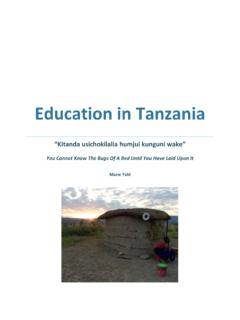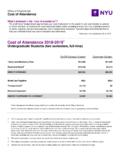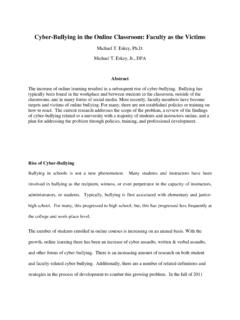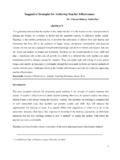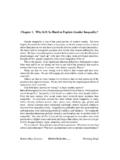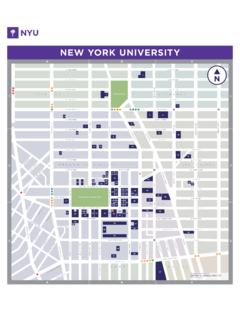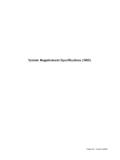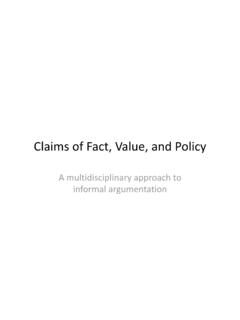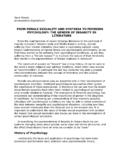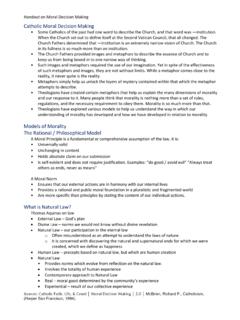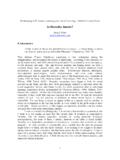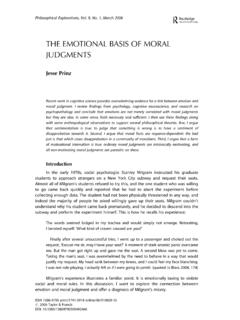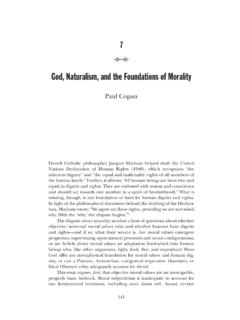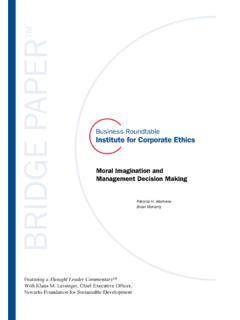Transcription of Partners: Religious and Moral Education - nyu.edu
1 PARTNERS: Religious AND Moral Education . Gabriel Moran I am a sympathetic outsider to the issues of Australian Religious Education My aim in this essay is to provide an international perspective for those issues. I will not attempt to present the whole international picture; I doubt that anybody can do that. Rather, I will try to describe some of the variations in Religious Education within the English-speaking world. And for further specificity I will concentrate on the relation of Religious Education to Moral Education . I first describe two directions that Religious Education has taken during the last century, one illustrated by the United States and the other by England/Wales. I. then note what has been implied for Moral Education in the context of these two meanings of Religious Education . Finally, I propose what seems to me the best form of partnership between Religious and Moral Education , spelling out the effect in the lives of children, youth and adults.
2 Religious Education : TWO DIRECTIONS. My proposed partnership is not exactly a blending of the two meanings of Religious Education ; however, I have tried to learn from both of them and to bring elements of each of them into the partnership. I think that Australians are in a particularly good position to adopt the best elements of each meaning of Religious Education because Australia is one of the few places where both British and writings on Religious Education are read and discussed. What is adopted from these foreign sources can be combined with a distinctive Australian outlook on spirituality, morality, politics and Education . Ecumenical Process The term Areligious Education @ can be found in the British American colonies as early as the seventeenth century, but its occasional use then was as a general reference to the church=s Education . The first reference I can find to Areligious Education @ as a distinct project is a Unitarian conference in 1872 (Report 1873).
3 The term came to have a very distinct meaning in the early decades of the twentieth century. AReligious Education @ had two perceived strengths: 1)It could be an umbrella term for Protestant-Catholic-Jewish conversation about Education 2)It could function as a bridge between religiously affiliated schools and the state (public) schools. (Coe 1920). Despite the great hopes of the founders of the Religious Education movement, their ambitious aims were never (or have not yet been) realized. Catholics, Jews and conservative Protestants were suspicious of Areligious Education @ as being a cover for the liberal Protestantism that had emerged in the United States during the 1870s. In addition, the state school system remained an impenetrable and distant land. The result was that Areligious Education @ was generally identified with liberal Protestantism, although in the 1930s some Catholic educators had their own Religious Education movement, centered on a return to the New Testament.
4 Since the 1960s in the United States there has been some realignment and reform of Religious Education . After the decline of liberal Protestantism=s Religious Education in the 1940s, the term was reinvigorated by the entrance of the Catholic church into ecumenical conversation. Religious Education became a common language for liberal Catholics, liberal Protestants and liberal Jews - three groups that are a small minority in the United States. The conservative wings of the three religions and the personnel of the state school system are wary of anything called Areligious Education .@ The group that now seems most comfortable with Areligious Education @ is made up of Catholic educators. Unfortunately, they often use the term to refer to parish programs in contrast to Catholic schools. Not only does that usage exclude ecumenical conversation, it even obstructs educational dialogue within the Catholic church. This century-long use of Areligious Education @ may seem to illustrate nothing but the confusion of the United States in matters Religious .
5 The history is certainly not a strong one on which to build, but, at least for those of us in the United States, we have to remember the history lest we repeat the mistakes of the past. And there are positive elements as well. The Religious Education Association was intended from the beginning to be Ainternational.@ In practice that meant the United States and Canada, but even that much inclusion was an accomplishment. In recent years, a few Europeans and a few Australians have given more legitimacy to an international claim, especially in the Association of Professors and Researchers in Religious Education . The Religious Education Association was also from the beginning ecumenical in aim. While such an aim is commonplace today it was not so in the first decade of the twentieth century. As I noted above, this aim was not realized. Religious differences ran deeper than the founders of the movement assumed.
6 And educational policies within each of the religions are among the most resistant to criticism and change. Nonetheless, the need for a Religious conversation is greater today than it was a century ago, a conversation that would have to include more than the Athree American faiths.@ The entrance of Islam as a full- fledged partner will probably help to reshape the conversation. The possibility of Areligious Education @ providing a meeting point for religiously affiliated schools and state schools seems distant at best. That fact is not surprising, given the history of the near obsession to keep Asectarian religion@ out of the schools. (Mann 1957). The educational question of teaching religion is treated under the peculiar language of Achurch-state separation,@ a European phrase that should have been left in Europe. When the Supreme Court outlawed state-mandated Religious exercises, it tried to affirm a legitimate place for religion in the curriculum.
7 The Court=s language was immediately frozen into an artificial distinction between Ateaching religion@ and Ateaching about religion.@ (Piediscalzi 1972). The result is that a discussion which should involve the whole country is confined to the few people for whom this distinction makes sense. While religion infiltrates every aspect of life in the United States, Religious Education and the teaching of religion are assumed without question to be out of bounds for the country=s school system. Eventually, the country will have to confront its rampant religiosity in a serious academic way but I do not think that day is imminent. Classroom Subject A different direction for Religious Education emerged in England in the 1940s. The term Areligious Education @ was appropriated for the specific provisions of the Education Act of 1944. The Act defined Religious Education as comprised of two elements. The first element was worship: AThe School day in every county school and in every voluntary school shall begin with collective worship on the part of all pupils in attendance at the school.
8 @ The second element of Religious Education was instruction: AReligious instruction shall be given in every county school and in every voluntary school@ (Cox 1983, 4). The driving force behind the passage of this bill was the great Archbishop William Temple. There is no doubt that Temple=s motives were of the highest quality. He said that he wished to further the welfare of all people in a democratic state. Although the vast majority of the population was Christian, Temple=s choice of Areligious Education @ indicated an educational rather than an ecclesiastical purpose. Where did Temple find the term Areligious Education @? The most likely source is meetings of the International Missionary Council. At the 1928 meeting in Jerusalem, Temple referred to a Areligious Education report,@ co-authored by Luther Weigle of Yale Divinity School. (Priestly 1991). By the 1960s England was more religiously diverse than the authors of the 1944.
9 Act could have envisioned. Not surprisingly, the provision of corporate worship ran into difficulties. Many people believe that Religious worship is of its nature specific to one Religious group. Many people also question whether school is the appropriate place for regular worship services. The provision for worship in the 1944 Act began to be criticized by writers and to be downplayed in the schools (Hull, 1975). The 1988 Education Act tried a compromise which said that the collective worship Ashall be wholly or mainly of a broadly Christian This language, which was repeated in l996, was not likely to stem criticism and opposition. (Hull 1989). The other provision of the 1944 Act fared much better in the changing context of the last forty years. The simple injunction that Areligious instruction shall be given@ left the door open to creative reforms. Whereas in the United States Areligious instruction@ has a legal meaning practically equivalent to indoctrination, there was no intrinsic reason why Areligious instruction@ could not be used for a properly academic study of religion and religions.
10 Under the leadership of John Hull and his colleagues, a syllabus was produced that took account of Religious diversity and the school=s mission. AReligious Education is no longer to foster or nurture faith in any particular religion; it is to promote a sympathetic but critical understanding of religion. (Hull 1982, p. xiv). The dissatisfaction with collective worship in the school has tended to throw the meaning of Religious Education on to the second provision, Religious instruction. The result is that Religious Education (especially when referred to as RE) is spoken of as the subject of classroom instruction in the state school. The development of Religious Education curricula in England has been a service to teachers in many countries, including Australia (Crotty 1986). Compared to the United States, Religious Education in England and Wales is a more logical, professional and well-defined venture. The drawback is that Religious Education as the name of a classroom subject can produce unintended obstacles to conversation and cooperation with others whose interests are Religious and/or educational.
